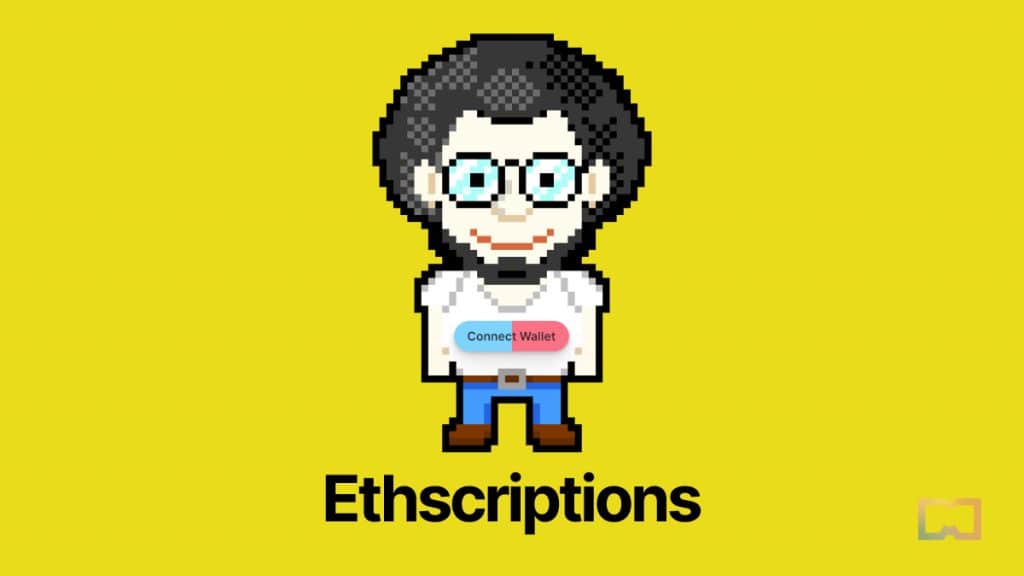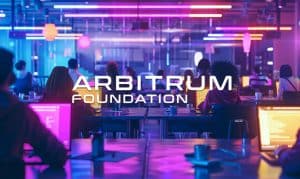Inscriptions Land on Ethereum: Over 130,000 Inscribed in Four Days


In Brief
Tom Lehman, co-founder and former CEO of genius.com, has developed Ethscriptions.
Launched on Jun 17, Ethscriptions are a new way of creating and sharing digital artifacts on Ethereum using transaction calldata.
The protocol saw almost 30,000 inscriptions in 18 hours and more than 130,000 inscriptions in three days.

Inscriptions, popularized by Bitcoin Ordinals, have landed on Ethereum via a new protocol developed by Tom Lehman, the co-founder and former CEO of genius.com. Dubbed Ethscriptions, the protocol is “a new way of creating and sharing digital artifacts on Ethereum using transaction calldata.”
Part of the Ethereum Virtual Machine (EVM), calldata is a specific region of memory used to store the input data passed to a function during contract execution. The calldata is read-only, meaning that smart contracts can access and retrieve the data stored in calldata, but they cannot modify or write to it. This restriction ensures the integrity and immutability of the input data during contract execution.
Launched on Jun 17, Ethscriptions saw almost 30,000 inscriptions in 18 hours, which Lehman said was a huge success. At the time of writing, more than 130,000 Ethscriptions have been created.
Currently, the protocol only allows images with a maximum size of 90KB to be “ethscribed.” However, it supports all Uniform Resource Identifiers (URI)
How it works
An Ethscription is created when a transaction is made on the Ethereum blockchain, and the information is in UTF-8 format. To ensure that each Ethscription is unique, no other Ethscription in a previous block or transaction within the same block can have the exact same data.
If a new transaction on Ethereum contains the unique identifier (hash) of a valid Ethscription, it is considered a valid transfer of that Ethscription as long as the person sending the transaction is the owner of that Ethscription.
The person who receives the initial transaction that creates the Ethscription becomes the owner of that Ethscription, while the person who sends that initial transaction is considered the creator of the Ethscription.
Like Bitcoin Ordinals, Ethscriptions display a number in the order in which they were created. Lehman said that he and 0xHirsch had to rewrite the Ethscriptions index to enable consistent numbering.
The first Ethscription
According to Lehman, the earliest Ethscription was created in 2016, which he found when building the indexer. Lehman clarified that he developed the formal protocol, website and indexer for the protocol.
“A core part of the Ethscription Protocol is that dupes are not allowed. This is great because when you successfully ethscribe something you know you are the first to do it,” Lehman tweeted. To ensure that each Ethsciption is unique, the protocol’s creation page automatically checks whether one’s content has been “ethscribed” before and sends the user a warning so they don’t waste gas creating an invalid Ethscription.
Difference between Ethscriptions and NFTs
Creating NFTs on Ethereum begins with the creation of a smart contract that defines the unique traits of the NFT. Within this contract, a minting function is implemented to generate new tokens and assign them distinct identifiers. The metadata associated with each NFT, such as its name and image, can be stored within the contract or as an external reference. Ownership of NFTs is tracked within the smart contract, enabling users to buy, sell, and transfer them by interacting with the contract. Standards like ERC-721 or ERC-1155 ensure interoperability and provide common interfaces for NFT interactions across platforms.
In contrast, Ethscriptions are created through the content of transaction input data. When initiating an Ethereum transaction, the input data must adhere to a unique data URI format. If the data meets the criteria and remains unique within the current block, it generates an Ethscription that can be sent with 0 ETH.
While NFTs focus on creating unique digital assets with associated metadata and ownership tracking, Ethscriptions emphasize the decentralized and cost-efficient data storage on the Ethereum blockchain. NFT creation involves the development of dedicated smart contracts, minting tokens, and managing ownership, while Ethscriptions are derived from the content of transaction input data.
Why create Ethscriptions?
In addition to launching the protocol, Lehman also introduced Ethereum Punks, a derivative of the blue-chip CryptoPunks NFT collection. All 10,000 pieces in the Ethereum Punks collection have since been “ethscribed” on Ethereum.
When a Twitter user, nft1.0, questioned the purpose of this endeavor, Lehman responded: “It’s cheaper and more decentralized than using contract storage. Also, protocol guarantees global uniqueness of the content of all valid Ethscriptions! Plus, it’s skating to where the puck is going in an L2 world.”
Regarding the relationship between the protocol, Ethereum Punks, and L2s, Lehman clarified that both L2 solutions and Ethscriptions treat Ethereum as a “data dump.” As there is a prevalent belief that L2s are necessary for Ethereum to scale and succeed, Lehman said, “We must admit that Ethereum’s real use is a data store, not as a thing that executes code!”
Read more:
Disclaimer
In line with the Trust Project guidelines, please note that the information provided on this page is not intended to be and should not be interpreted as legal, tax, investment, financial, or any other form of advice. It is important to only invest what you can afford to lose and to seek independent financial advice if you have any doubts. For further information, we suggest referring to the terms and conditions as well as the help and support pages provided by the issuer or advertiser. MetaversePost is committed to accurate, unbiased reporting, but market conditions are subject to change without notice.
About The Author
Cindy is a journalist at Metaverse Post, covering topics related to web3, NFT, metaverse and AI, with a focus on interviews with Web3 industry players. She has spoken to over 30 C-level execs and counting, bringing their valuable insights to readers. Originally from Singapore, Cindy is now based in Tbilisi, Georgia. She holds a Bachelor's degree in Communications & Media Studies from the University of South Australia and has a decade of experience in journalism and writing. Get in touch with her via cindy@mpost.io with press pitches, announcements and interview opportunities.
More articles

Cindy is a journalist at Metaverse Post, covering topics related to web3, NFT, metaverse and AI, with a focus on interviews with Web3 industry players. She has spoken to over 30 C-level execs and counting, bringing their valuable insights to readers. Originally from Singapore, Cindy is now based in Tbilisi, Georgia. She holds a Bachelor's degree in Communications & Media Studies from the University of South Australia and has a decade of experience in journalism and writing. Get in touch with her via cindy@mpost.io with press pitches, announcements and interview opportunities.





















































